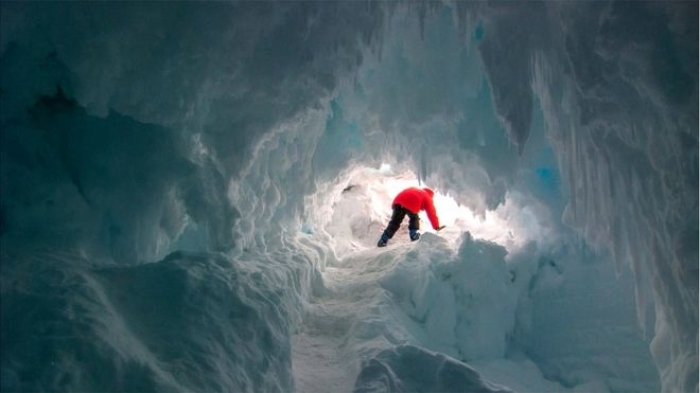Soil samples retrieved from the caves have revealed intriguing traces of DNA from mosses, algae and small animals.
The research has been published in the journal Polar Biology.
"It can be really warm inside the caves - up to 25C in some caves. You could wear a T-shirt in there and be pretty comfortable," said co-author Dr Ceridwen Fraser, from the Australian National University (ANU) in Canberra.
"There's light near the cave mouths, and light filters deeper into some caves where the overlying ice is thin."
Dr Fraser said that most of the DNA resembles that found in plants and animals from the rest of Antarctica. But that some sequences couldn't be fully identified.
Co-researcher Prof Craig Cary, from the University of Waikato in New Zealand, said previous research had found that a range of bacteria and fungi lived in Antarctica's volcanic caves.
"The findings from this new study suggest there might be higher plants and animals as well," Prof Cary explained.
But Prof Laurie Connell, a co-author from the University of Maine, said the results did not confirm plants and animals were still living in the caves.
"The next steps will be to take a closer look at the caves and search for living organisms. If they exist, it opens the door to an exciting new world," she explained.
There are a number of other volcanoes across Antarctica, the researchers pointed out, so sub-glacial cave systems could be common across the continent.
More about: #Antarctica















-1741770194.jpg&h=190&w=280&zc=1&q=100)






-1741765030.jpg&h=190&w=280&zc=1&q=100)

























